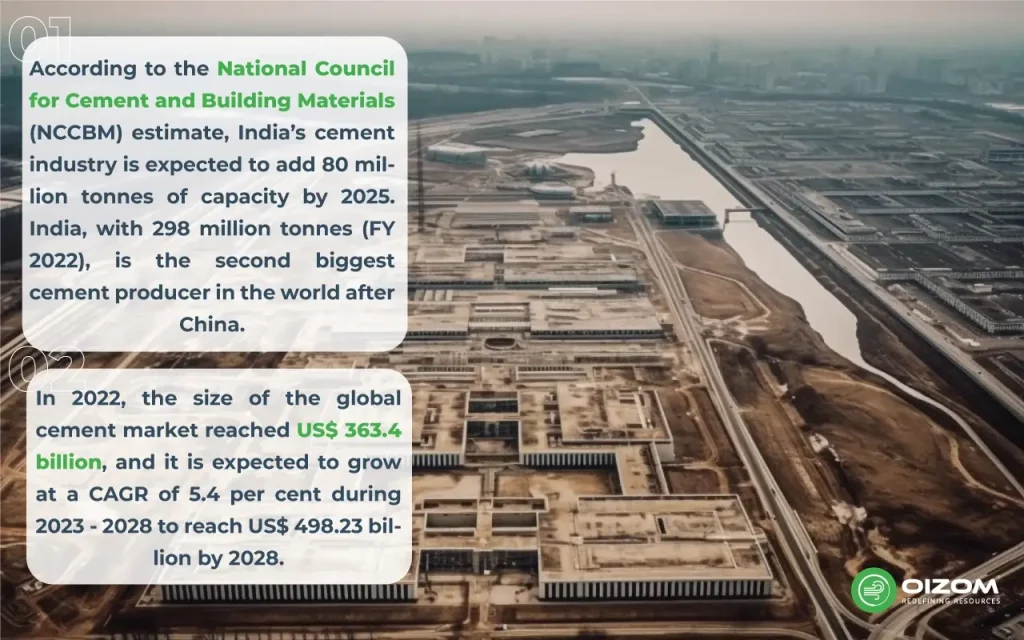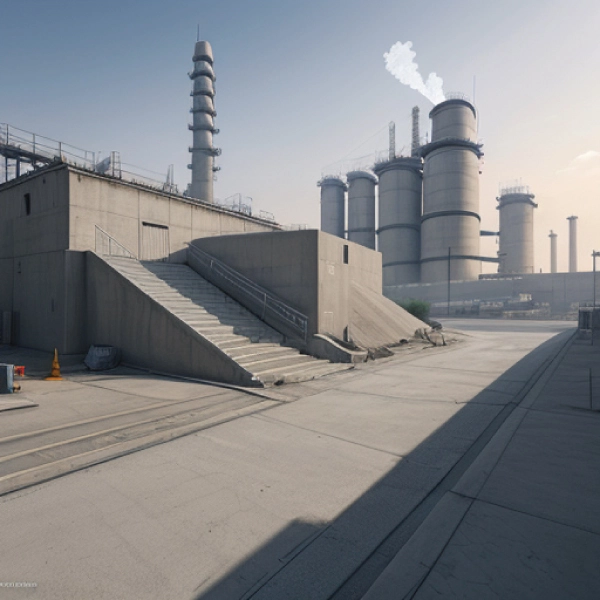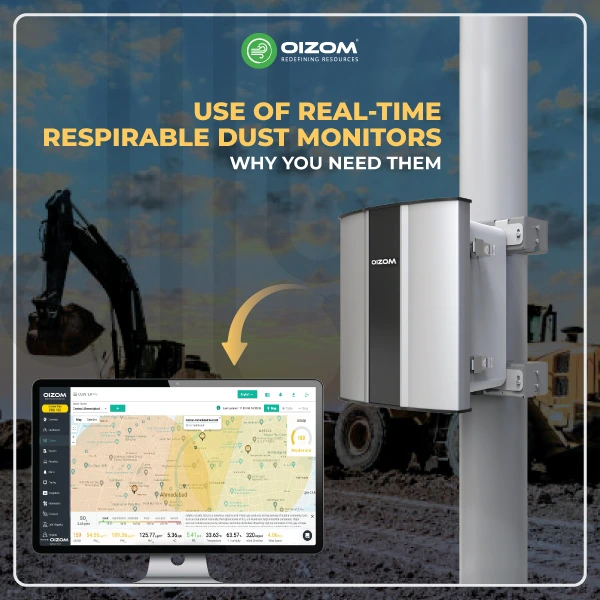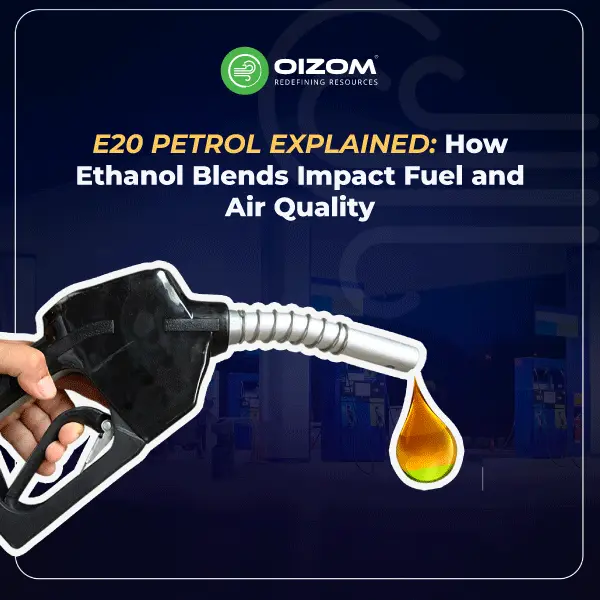Environmentalists all across the world are becoming increasingly concerned about air pollution. The situation is still out of control in a developing country like India. With the advancement in various industries, air pollution control has become more critical than ever. Cement manufacturing is one of the most significant contributors to air pollution. Cement-making requires substantial energy consumption and generates large volumes of greenhouse gasses and other atmospheric pollutants.
On the other hand, the Indian cement industry is one of the largest producers of air pollution. As a result, we see a variety of air pollution control measures in this industry. The cement sector accounts for around 7% of worldwide carbon emissions. Particulate matter (PM) emissions from cement facilities are significant, and cement is considered the world’s most serious pollutant. This article discusses the various types of pollutants the cement industry releases and and how to control air pollution in the cement industry through effective mitigation strategies. Join us on this journey towards understanding how cement industry pollution contributes to health and environmental issues and what we can do about it!

How Polluted is the Cement Industry?
India’s cement industry links with other sectors, such as infrastructure, construction, housing, transportation, coal, power, steel, etc. It has a significant role in implementing Government flagship schemes and visions like housing for all, smart cities, concrete highways, dedicated freight corridors (DFC), the clean India mission, ultra-mega power projects, and waterways. Key pollutants from the cement industry include dust or particulate matter, nitrogen oxides (NOx), sulfur oxides (SOx), carbon oxides, and methane.
Did you know that a single cluster of large-scale cement plants in a North Indian state is responsible for 5% of the world’s anthropogenic CO2 emissions?
The effects of the cement industry’s pollution on life can be very severe. Below are some of the findings on its impact on humans and human-made systems:
- Random tests conducted on workers in cement industries in Bengal and Tamil Nadu have shown that 1/5th of the worker population is affected by diseases such as bronchitis, asthma and obstructive respiratory disease, among others.
- A recent study in Sri Lanka, which has ecological and geographical proximity to India, found that over 14% of the people living close to cement factories are afflicted with respiratory disorders.
In 2022, the size of the global cement market reached US$ 363.4 billion, and it is expected to grow at a CAGR of 5.4 per cent during 2023 – 2028 to reach US$ 498.23 billion by 2028.
Where Does The Problem Arise?
Many cement factories continue to have excessive emissions despite installing pollution control technologies. We occasionally see news articles indicating cement industries paying significant fines in the tens of lakhs (Cement plant at Bagga gets notice for violation of environment), if not higher, or even shutting down factories for exceeding pollution standards and even sometimes imprisonment. Shutting down a facility for even a month can significantly impact a company’s revenues and efficiency.
Cement factories release pollutants, including dust or particulate matter, NOx, SOx, carbon oxides, and methane. Cement is a significant contributor to air pollution. Additionally, pollutants from cement manufacturers endanger the lives of nearby flora and fauna.
Processes in Manufacturing Cement That Release Fugitive Emissions
Fugitive emissions are a crucial concern for the cement industry. Fugitive emissions are pollutants that are ‘fugitive’ or escape from a source without being accounted for. Regular emissions from established sources are accounted for, making them easier to monitor and control. In contrast, fugitive emissions are difficult to trace because their source is unclear. As a result, they unknowingly contribute to ambient air pollution. The problem of fugitive emissions arises at every level of the cement manufacturing process and presents a significant challenge.
Manufacturing cement is a multi-step process. Fugitive emissions are produced in each process, as illustrated in the infographic below.
- Mining – Because the raw material for cement is mined from limestone quarries, many activities are involved, including drilling, blasting, crushing, transportation, and stockpiling, all emitting particulate matter and carbon dioxide.
- Raw Material Preparation – The raw material is mixed and ground to consistency using either dry, wet, or semi-dry methods. Fugitive particulate matter emissions occur throughout the grinding and transport procedures to the kiln.
- Kiln Processing – Involves combusting in the kiln. Clinkers, or complex, spherical nodules, are formed after heating the raw material. Kiln processing has three stages: drying or preheating, melting, and clinker cooling. Calcination is burning raw mix at high temperatures to generate clinkers. Air blowers then cool the clinkers before being transferred to the cement plant. At this stage, emissions mainly consist of gasses, including carbon dioxide, SOx, NOx, carbon monoxide, and hydrocarbons. These are emitted from the mixture being burned and treated and the fuel used to burn it.
- Cement Milling – It is the final stage of cement production, in which the clinkers are ground into fine powder. Certain chemicals are used to set the cement. This stage is also known as finish milling. Particulate matter, SOx, and NOx are among the pollutants emitted during this stage.
- Cement Packaging – This refers to the shipment and transportation of cement. During this step, particulate matter emissions are substantial when cement is loaded, transported, unloaded, and stored from the warehouse to the construction site.
In addition to the emissions mentioned above, VOCs are released during other industrial processes associated with these stages.
Methods for Controlling Air Pollution:
There are numerous techniques to reduce air pollution in the cement company. If you are a cement company’s owner or production manager, you must know how to manage air pollution at your facility. The kind of dust collectors you employ depends on the particle size, dust loading, flow rate, moisture content, and temperature of the gasses.
Emission prevention
Preventing emissions at the source is fundamental. Strategies include using less toxic materials, improving process efficiency, and shifting towards less polluting energy sources. For example, power plants are encouraged to phase out fossil fuels and adopt cleaner energy sources like nuclear and renewables.
Emission control technologies
Various technologies have been developed to control emissions from both stationary and mobile sources. Common techniques include:
- Combustion converts organic gasses or vapors into less harmful products like carbon dioxide and water.
- Absorption, where polluted air is passed through a scrubber containing a liquid absorbent to remove gaseous pollutants.
- Adsorption involves passing air through porous materials to capture gasses on the surface.
Emerging technologies
Emerging technologies focus on innovative solutions to reduce and eliminate pollution. Examples include advanced filtration systems, pulsed Wi-Fi technology for cleaner air in industrial settings, and carbon capture and sequestration technologies. These solutions aim to address traditional pollutants and tackle CO2 emissions contributing to global warming.
Various other techniques are present as emerging technologies we will understand in this blog: Sensor-based environmental monitoring advances. These real-time monitors, strategically placed at emission locations such as stacks and production zones, continuously detect dust concentrations. They use cutting-edge technologies such as Light Scattering and Probe Electrification to deliver critical data for:
- Regulatory Compliance: These monitors ensure adherence to emission limits set by local and international regulations, thus avoiding fines and potential shutdowns.
- Process Optimization: By identifying inefficiencies and dust hotspots, these systems enable targeted interventions, reducing dust generation and enhancing operational effectiveness.
- Real-time Insights: Instant access to dust levels allows for informed decision-making and proactive emission control.
Find out about devices.
With the advancement of current technology, new equipment on the market can assist you in managing air pollution in cement factories. Before you choose one of these gadgets, you should have a fundamental understanding of the options available on the market.
ESP or Electrostatic Precipitator
The ESP control device ionizes the contaminants in the air traveling between the electrodes. This device is commonly used in cement and roller mills to limit the emission of products such as cement kiln dust, a significant source of air pollution.
Baghouse Filters
Bags are used to filter polluted air in cement plants and other mills. Contaminated air passes through these bags, which are closed at the bottom. The top of the bag opens into a clean and pollution-free air chamber. Baghouse filters are used in cement manufacturing mills. To avoid air pollution, objects gathered in the bags are simply released back into the cement production process.
In-Situ Monitoring Device
This monitoring instrument tracks the emissions of SO2, NOx, and hydrocarbons during cement manufacturing in companies. The record will then be transferred to the control room, where the controller will review it and modify the temperature or flow of the objects used in the manufacturing process to reduce emissions and maintain control. The monitor is located near the cement kiln stack.
Selective Non-catalytic Reduction
This device allows you to monitor the present emissions of SO2, NOx, and HCs. The emission can be controlled after the reading is proper. Using this system regularly in your cement mill can reduce NOx generation in the cement kiln.
Sustainability Challenges Faced by the Cement Industry
Many cement factories continue to have excessive emissions despite installing pollution control technologies. Conventionally, cement industry pollution control equipment includes electrostatic precipitators, baghouses, pulse jet filters, and industrial scrubbers.
However, these have a limited and clearly defined coverage area and cannot effectively treat fugitive emissions. The air mentioned above pollution control techniques are energy-consuming, require regular maintenance, and are expensive, given their coverage capacity. They are not very effective in treating ambient air pollution either.
Conclusion
A comprehensive approach is necessary to control air pollution effectively in the cement industry, integrating technological advancements and regulatory frameworks. Implementing cutting-edge filtration technologies, such as electrostatic precipitators and fabric filters, can significantly reduce particulate matter emissions. Adopting alternative fuels with lower pollutant contents, alongside optimizing energy efficiency and process controls, minimizes harmful gas emissions. Regulatory bodies must enforce stringent emission standards and encourage the adoption of best practices through incentives and penalties.
Moreover, continuous monitoring devices like Oizom, at the forefront of this paradigm shift, provide comprehensive solutions that empower industries to monitor, assess, and act. The path to industrial sustainability becomes more precise with real-time data, cutting-edge technology, and a commitment to a greener future. and reporting of emissions facilitate transparency and accountability, ensuring ongoing compliance and environmental protection. Exploring the impact of cement manufacturing on air quality emphasizes why these strategies are vital, as the industry’s operations directly influence environmental and public health.
By embracing these strategies, the cement industry can substantially mitigate its environmental impact, contributing to cleaner air and a healthier planet.
FAQs
The cement industry primarily emits particulate matter, sulfur dioxide (SO2), nitrogen oxides (NOx), carbon dioxide (CO2), and volatile organic compounds (VOCs). Particulate matter is a significant concern due to its direct impact on air quality and human health.
Cement production is a substantial source of CO2 emissions, contributing approximately 7-8% of global CO2 emissions. On average, the production of one ton of cement releases about one ton of CO2 into the atmosphere, mainly due to the calcination of limestone and the burning of fossil fuels.
Pollution reduction in the cement industry can be achieved through various means, including adopting cleaner production technologies, improving energy efficiency, using alternative fuels and raw materials, and implementing stringent emission controls. Investing in carbon capture, utilization, and storage (CCUS) technologies can significantly mitigate CO2 emissions.
The cement industry's environmental impact includes the release of greenhouse gasses and pollutants contributing to climate change, air and water pollution, depletion of natural resources due to quarrying activities, and landscape disruption. These effects contribute to biodiversity loss, health issues in local communities, and overall environmental degradation.






